Kurt Busiek and John Paul Leon bring Batman into the “real world.”

—
There’s a meme out there. I’m sure you’ve seen it. It goes something like this: Be Yourself. Unless You Can Be Batman. Then Always Be Batman.
It’s cute as memes go but it forgets the one thing that really has to happen for you to be Batman: Your parents have to be murdered before your eyes.
And that, of course, is the darkness at the root of Batman. It’s one thing to imagine yourself the sole survivor of a planet you never knew. It’s a whole other thing to imagine yourself as a child enmeshed in the extraordinarily traumatic experience of watching the people who mean the world to you die violently.
I know I’m putting a fine point on it because people generally just stick with the, “How cool would it be to have those wonderful toys and jump off buildings chasing the Joker?” Myself included.
But writer Kurt Busiek and artist John Paul Leon are going in the other direction with Batman: Creature of the Night, a miniseries debuting 11/29 from DC that poses the question: What would happen if a kid who absolutely loved Batman lost his parents like Bruce Wayne did?
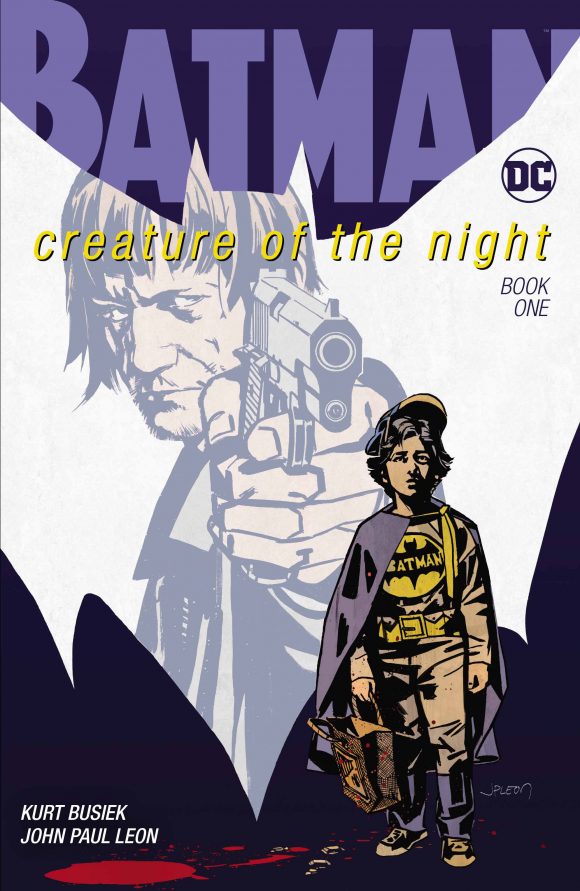
In this case, the boy is Bruce Wainwright, a kid in 1968 Boston who goes out trick-or-treating in his Ben Cooper Batman costume only for the worst to happen.
This is red meat for Batman fans — and comics fans in general — and we have your EXCLUSIVE FIRST LOOK at Issue #1, as well as a Q&A with Busiek and Leon, from New York Comic Con:
—
Dan Greenfield: Kurt, what was the genesis of doing this particular project? I know you did Secret Identity (which similarly reimagined Superman in the “real world”). When did you get the idea that you wanted to do a Batman project that kind of jumps off that idea?
Kurt Busiek: It was such a fun experience doing Secret Identity and exploring Superman in a different way that the prospect of digging into Batman — not the same way we dug into Superman but in a way that suited who Batman is — (was appealing). Joey Cavalieri, who was the editor of Secret Identity, was interested in doing a Batman project. I was interested in doing a Batman project. We just had to find the right artist, which took several false starts, and ended us up with John Paul.
It’s been a long process, but the start of it was my idea that while Superman is a metaphor for adolescence — Clark Kent is the unrespected, infinite child, and Superman is the manly man and he changes identities like his voice is cracking — Batman is, despite the fact that Batman tends to appeal to an older reader, is actually a younger idea. Batman is this 8- to-10-year-old kid going, “The world isn’t fair. I will grow up and I will make it fair, by punching it in the face.” (Laughter.)
And so, I think that Batman is a similar idea to the Hulk. The Hulk is this — the Hulk is very appealing to young children because the Hulk breaks stuff.
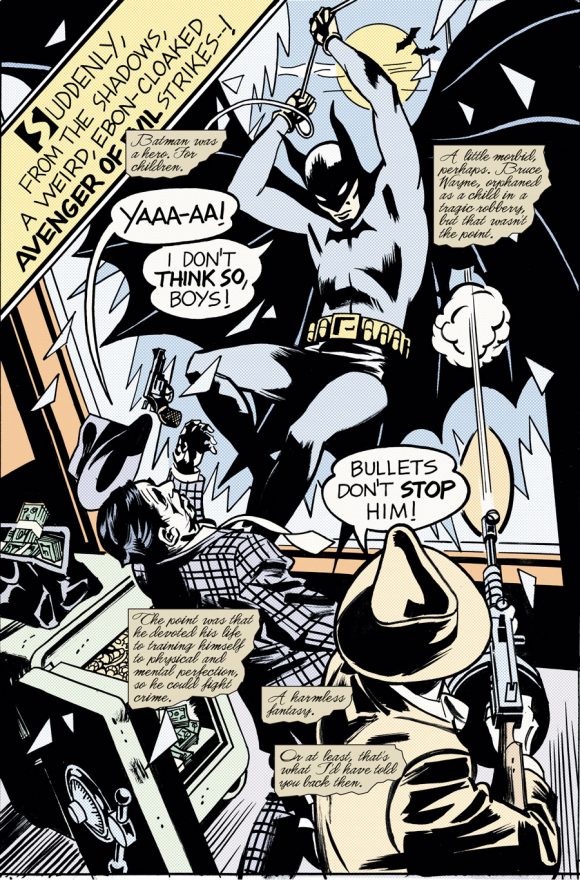
Dan: He’s a temper tantrum.
Kurt: Yeah, the Hulk is — you know, it’s the same reason kids love dinosaurs. “I can’t do that. If I was big, I could do what I want.” And the Hulk is big and he does what he wants and he does it in a fairly childish way. Batman is a more nuanced take on the idea of a child, saying, “It’s not fair. It’s not fair.”
Batman’s going to make it fair and that’s a really, really young idea and I think that’s one of the reasons why Batman, you know — he’s such a classic character because he’ll appeal to a 6-year-old and he’ll appeal to a 26-year-old because there’s so much you can do with that idea.
Dan (raises hand): A 50-year-old, also.
Kurt: OK, I’ll take it.
Dan: Now, John Paul, how’d you get involved in the project?
John Paul: Um, actually, Kurt approached me at a convention — was it in San Diego?
Kurt: I think it was.
John Paul: It was several years ago, and it was immediately something I was intrigued with. I thought Secret Identity was really cool. And, the idea of working with Kurt was very, you know, appealing to me.
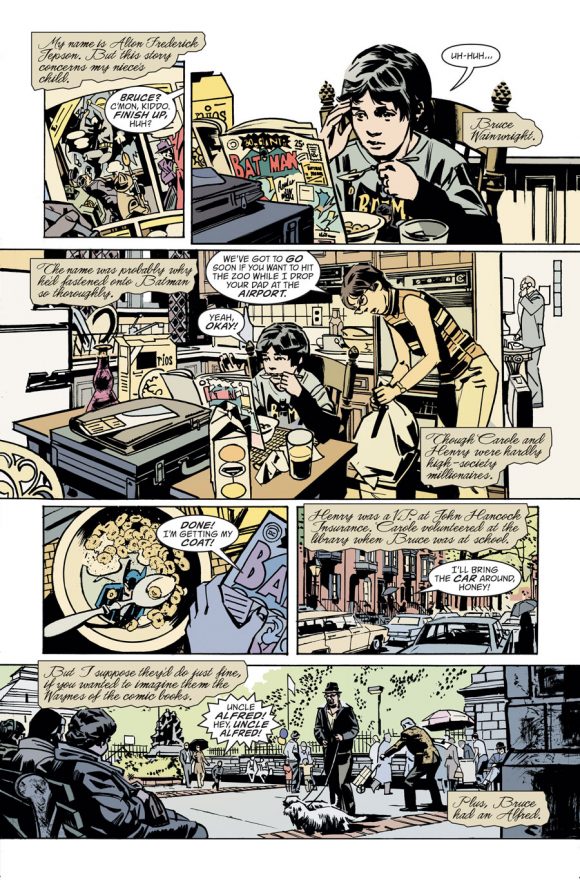
Dan: Now, drilling down into the story itself: You chose Boston. Usually, people think of Gotham, you think of New York as the analogue. Some people, because they’re a little bit younger, they think Chicago because that’s where they shot some of the movies, but it’s New York. You chose Boston. Why Boston?
Kurt: Because, New York — this actually comes up in the story, where the lead character, who lives in Boston, and he’s a Batman fan, but he likes Boston because he thinks Boston feels more like Gotham City. Gotham City is a spooky place. It’s a gothic kind of city. And there are parts of New York, you know Downtown, below Midtown, or other parts of the city — the classic thing I think Dennis O’Neil used to say is Metropolis is New York during the day and Gotham is New York at night, but, you know, everything from Beacon Hill to Charlestown to Government Center, Boston has this older feel. Where New York’s Midtown has been rebuilt and rebuilt and rebuilt, Boston retains this older character that suits Batman well.
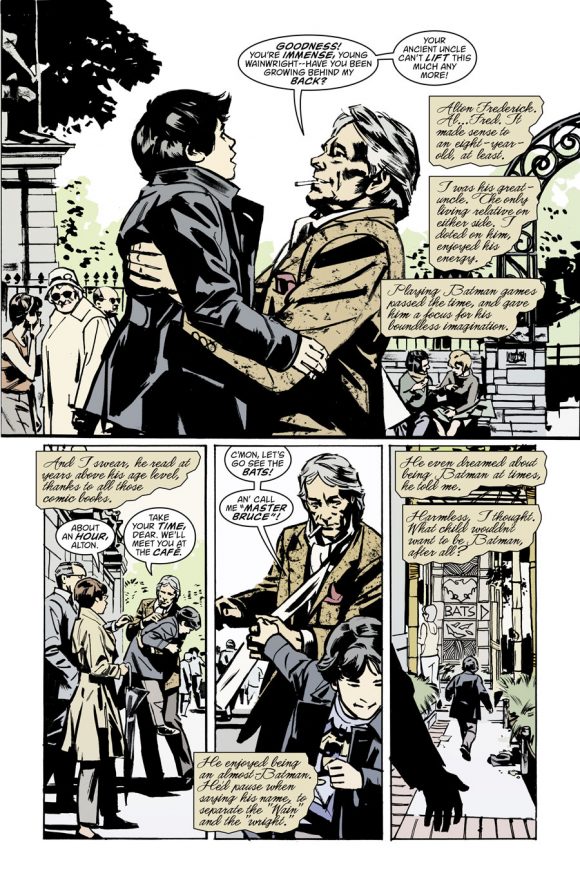
Dan: I lived in Boston for eight years and when I saw it was set there I did think to myself, “That’s perfect.” It never even occurred to me, but it’s exactly what you said. Now, you also decided to make this a period piece. It opens up in 1968. Is that for the whole story or does it just begin in 1968 …
Kurt: Well, I mean, Superman: Secret Identity starts off in the past, as well, because we start off with Clark as a teenager and by the end of it, it’s happening in the future, and Clark is an older man. Creature of the Night doesn’t cover as much time, it’s not a story of a life, but it does start with an 8-year-old whose parents get killed and by the end of the story, it’s about a grown-up. So, we’re dealing with at least a 15- to 20-year span.
So, we started in ’68 because we wanted to start with the comics of 1968 and Bruce goes out dressed as Batman in a Halloween costume and it’s kind of a Ben Cooper-style costume.
Dan: Well, it’s almost exactly like one. (Smiling.) Whose idea was it to do it that way?
Kurt (smiling): I said a Ben Cooper-style costume (nods toward John Paul) — but don’t make it so close that they could sue us! And I think he added some details that aren’t in the Ben Cooper costume.
John Paul: I just barely, barely altered it.
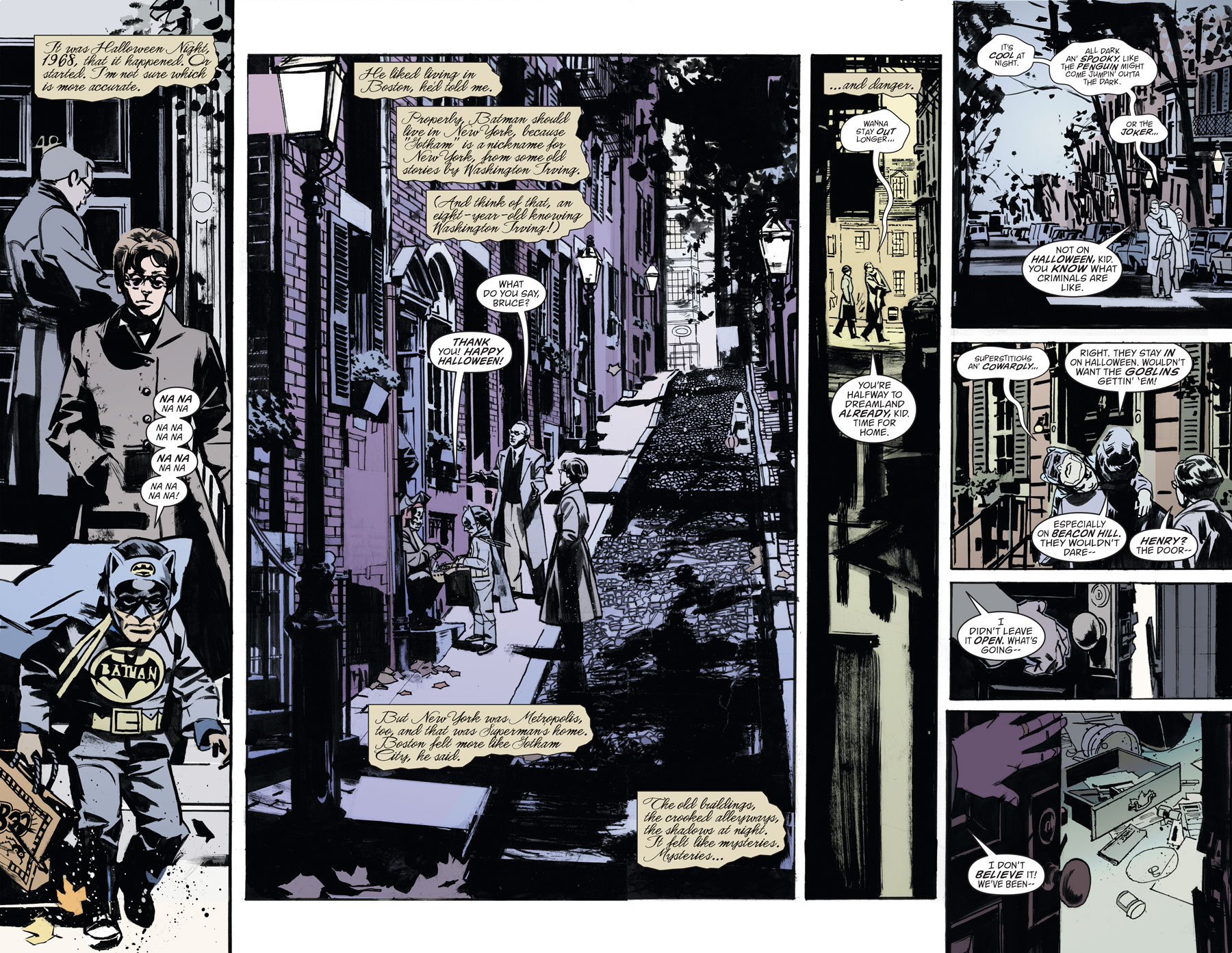
Dan: As soon as I saw it, it blew my mind. Because I had that costume, and I still have the little shirt tucked in a drawer somewhere. … Now, without giving too much away, are there other aspects of the Batman history, the Batman world, that are going to enter into it? Are we going to see other analogues?
Kurt: It’s funny. When I was doing Superman: Secret Identity, the only characters that I was interested in were Clark and Lois. But people read into it and they’ve decided that this character is represented by this. Y’know, “The government scientists are clearly stand-ins for Luthor” and so forth. And they’re building that more into it.
In Creature of the Night, we have a Batman, and we have his parents, we have an Alfred, who is not quite — he’s not a butler. We have Robin, who is not a superhero. I look forward to people reacting — oh, and we don’t have a Commissioner Gordon, but we have an Officer Gordon. Gordon Hoover.
What I didn’t want to do with this kind of book is do the typical Elseworlds, where it’s a different setting, and everything happens the same. So, we have characters that Bruce reacts to because he decides this is his Alfred, this is his Commissioner Gordon, this is his Robin. It doesn’t necessarily work out that way because real life isn’t like the comics. But there isn’t … I guess people are gonna read the first issue and decide that guy’s the Joker, but he’s not the Joker, he’s just a criminal.
I wanted to deal with the core emotional, I guess, pathology, if that’s the right word, of Batman, more than I wanted to say, “And here’s a stand-in for Two-Face and here’s a stand in for the Riddler.” So, there’s probably more connections than there were in Secret Identity. But we didn’t go crazy with it.
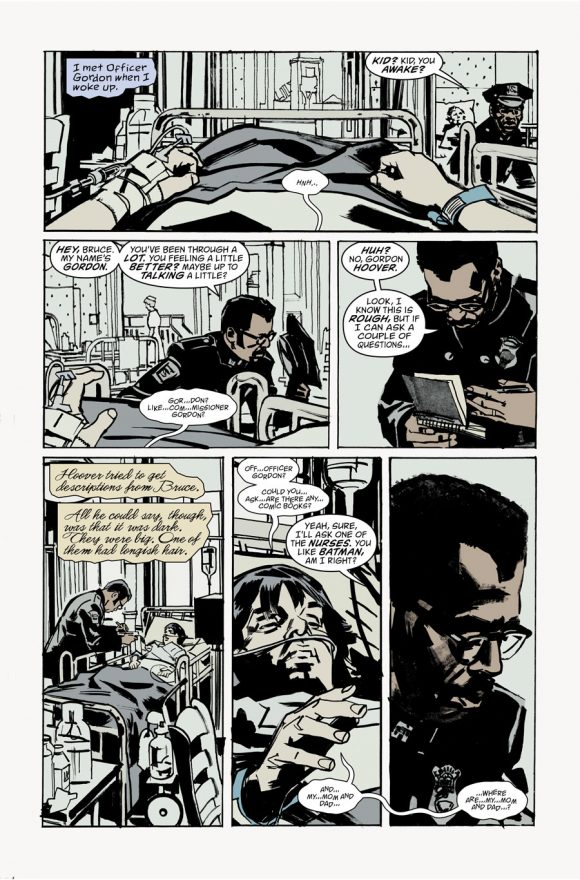
Dan: John Paul, people haven’t read it yet, but in terms of the process, what’s been the most rewarding part of working on this project, so far?
John Paul: For me, it’s that point — it’s kind of what we were talking about earlier — where the real world, or our experience of the real world, meets the comic-book world. You know, that’s what I think is most compelling for me in my process here — to try and kind of marry those two ideas in one visual representation. That’s the most interesting to me.
Kurt: Also, I wanna throw in here: I started this project years before John Paul came aboard. And we had a couple of false starts with artists that didn’t work out for one reason or another. But, one of the most enjoyable parts for me was John Paul read the first script and he started asking, “Well, what if we did this? What if we made this darker? What if we did this?” And he made specific suggestions that allowed me to rewrite the script and tailor more to what he thought was powerful about the idea.
So it’s not just my story and John Paul is the art monkey. It’s a story that I conceived and then John Paul reacted to, and then I tailored it so that it’s now our story. And it’s always great working on comics, when you’re doing it as a good, solid collaboration rather that just as a relay race.
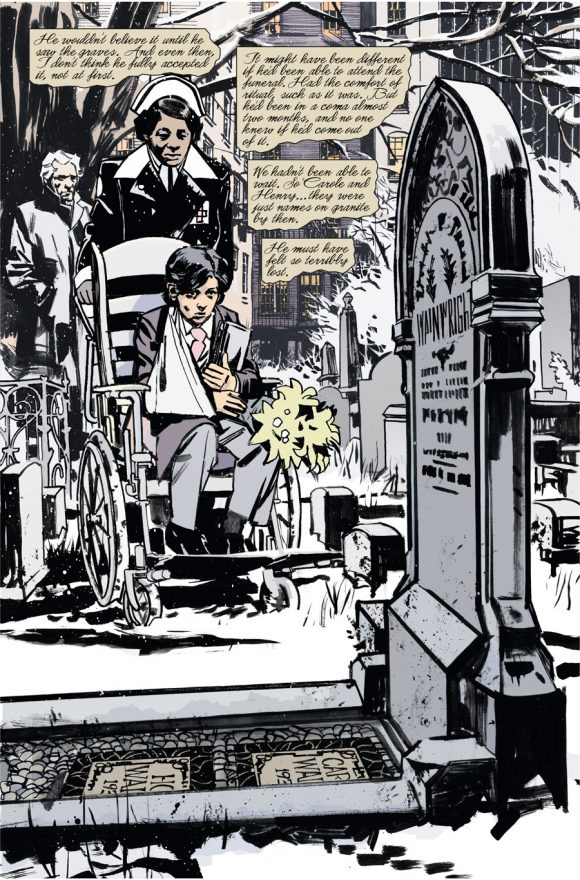
—
Batman: Creature of the Night is a 4-issue miniseries that debuts 11/29. This interview was edited for clarity.

October 24, 2017
Oh boy! I look forward to it!
November 27, 2017
Oh my, look at that cover, the old classic lettered Batman logo, which was sorely missed!